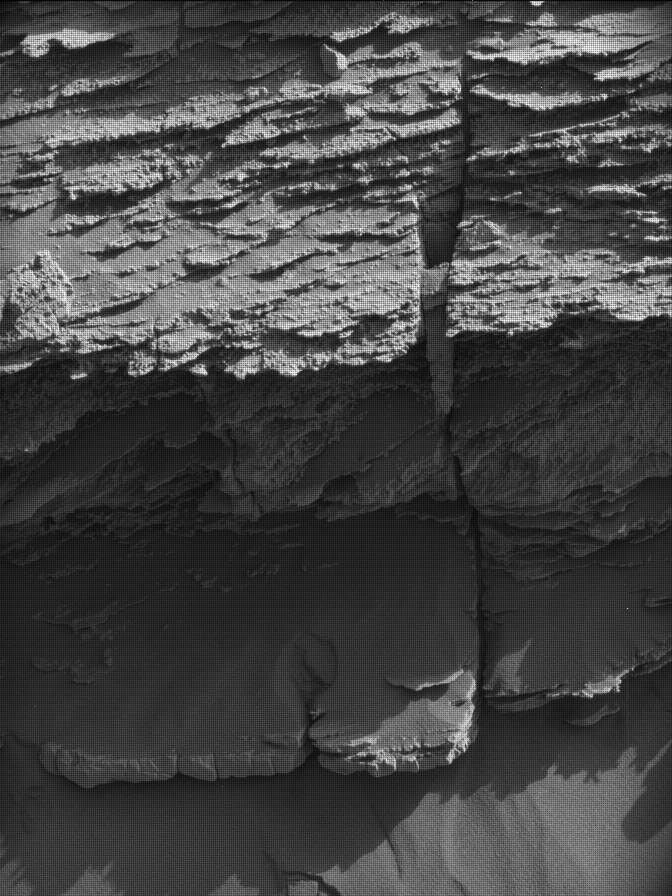We arrived at the spectacular workspace pictured above, but what made it spectacular - rocks - is what also made it tricky. Our left front wheel was propped up just enough on one of the lovely and interesting rocks to make it unsafe to unstow the arm. Thus, as Deirdra, one of my planning partners said - it felt like Mars was taunting us with some early 1990s MC Hammer. Fortunately, the rover planners were confident in finding a way to reposition the rover to stabilize us enough to get the arm out, so that small maneuever was added to today’s plan. Our fingers are crossed we have better luck tomorrow!
While we could not apply MAHLI or APXS to the rocks ahead of us, we had no restrictions, short of overworking uplink teams, on using Mastcam and ChemCam. We took full advantage of our additional time to image our amazing surroundings. We planned a ChemCam raster along one of the notable resistant ridges that span the workspace blocks, on target “Saracura.” We used ChemCam RMI to image a stack of the layers at the edge of the marker band, at target “Curecurema.” Layer-parallel imaging like this is a terrific way to interrogate the mechanisms that formed those layers. There were so many interesting textures on the workspace rocks that we could not help but wonder if chemistry had anything to do with them. To investigate this, we planned Mastcam multispectral observations of two targets, “Patua” and “Tucano.” Mastcam will also cover the scene with multiple large stereo mosaics. One will capture the marker band extending away from us to the south, another will cover the workspace blocks, and a third will image blocks similar to those in the workspace, but out of reach, at target “Benevenuto.” We still managed time for a Navcam dust devil survey, and DAN passive and active measurements before and after we reposition the rover, respectively. RAD and REMS run throughout the plan.
Written by Michelle Minitti, Planetary Geologist at Framework




































